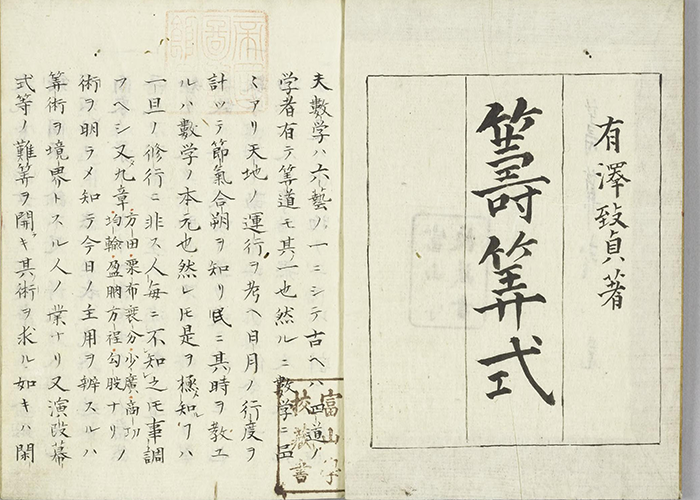Mathematical Treasures of Japan in the Edo Period: Napier's Rods for Japanese Samurai
Chusan shiki was written by the mathematician Arisawa Munesada (1689-1752). It is a book about the concept and use of Napier’s rods. This calculating device was invented in Europe and transmitted to China, from where it found its way into Japan. Munesada believed it was undignified and dishonorable for samurai to do calculations on a soroban, an instrument of merchants, and that they would be better served using the foreign Napier’s rods. Here is the title page:

A set of rods is illustrated on the left-hand page. The form of these rods is different in appearance than the Napier’s rods used in Europe. The Chinese modified the rods and the Japanese copied the Chinese version.

For more information about Napier rods or bones, see:
- John Napier: His Life, His Logs, and His Bones – Napier's Bones, by Michael J. Caulfield
- Mathematical Treasure: 17th Century Napier Rods, by Frank J. Swetz
The images above are presented through the kind cooperation of the National Diet Library, Japan, and are used with permission. They were obtained from the library’s digital gallery exhibit, Japanese Mathematics in the Edo Period, where a complete examination and viewing of the item presented above can be found.